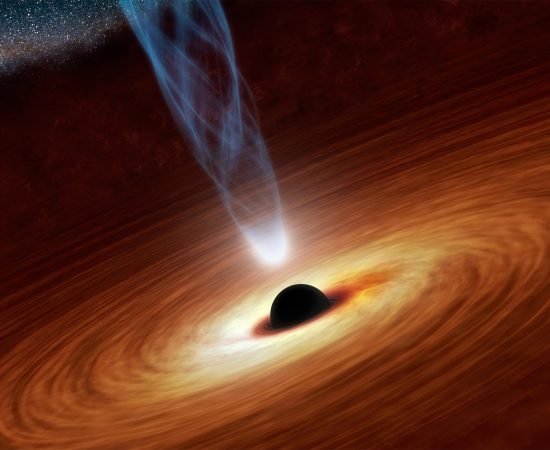Albert Einstein’s theory of general relativity has been incredibly effective in describing the gravity of stars and planets, but it doesn’t seem to work exactly on all scales.
Everything in the world is affected by and subject to gravitation. Yet this most prevalent of all basic forces also poses the greatest difficulties to scientists. Although general relativity, the theory developed by Albert Einstein, has been incredibly effective in describing the gravitational pull of planets and stars, it does not appear to be applicable to all scales equally.
From Eddington’s determination of the starlight deflection by the Sun in 1919 to the most recent discovery of gravity waves, general relativity has withstood many years of empirical tests. But when we attempt to apply it to very tiny distances, where the rules of quantum physics apply, or when we try to explain the entire universe, we start to see holes in our knowledge.
Our most recent research, which appeared in Nature Astronomy, has now put Einstein’s hypothesis to the test on the largest possible size. We believe our method may one day help settle some of the greatest mysteries in cosmology, and the findings suggest that the theory of general relativity may need to be tweaked on this scale.
Faulty model?
The void, according to quantum theory, is filled with energy. Because our instruments can only detect changes in energy rather than its overall amount, we are unaware of its existence.
However, vacuum energy, according to Einstein, has a repulsive force that pulls the vacant space apart. Interestingly, in 1998, it was found that the expansion of the cosmos is in reality accelerating (a discovery rewarded with the 2011 Nobel prize in physics. However, compared to what quantum theory forecasts, the quantity of vacuum energy—or dark energy, as it has been dubbed—necessary to explain the acceleration is enormously less.
The key issue, dubbed “the old cosmological constant problem,” is therefore whether the vacuum energy actually gravitates, causing a gravitational pull and altering the expansion of the cosmos.
If so, why is its gravitation so much less powerful than expected? What is causing the cosmological acceleration if the void has no gravitational pull at all?
Although we don’t fully understand dark energy, we must proceed as though it does in order to account for the universe’s growth. Similarly, we also need to presume there is a form of invisible matter presence, dubbed dark matter, to explain how galaxies and clusters developed to be the way we perceive them today.
The lambda cold dark matter (LCDM) model, which predicts that the universe is composed of 70% dark energy, 25% dark matter, and 5% conventional matter, incorporates these presumptions. And in terms of fitting all the evidence gathered by cosmologists over the previous 20 years, this model has been incredibly effective.
But many scientists have questioned whether Einstein’s theory of gravity needs to be modified in order to adequately characterize the entire universe because the majority of the universe is composed of dark forces and substances that take strange values that defy explanation.
A new wrinkle emerged a few years ago when it became clear that various methods of calculating the Hubble constant, also known as the rate of cosmic expansion, produce conflicting results. This issue is referred to as the Hubble strain..
Two Hubble constant values are in conflict or friction with one another. The LCDM cosmological model, which was created to match the radiation left over from the Big Bang, predicts a value of one. (the cosmic microwave background radiation). The second is the rate of expansion, which is determined by looking for supernovas, or stellar explosions, in faraway galaxies.
Many speculative suggestions for how to alter LCDM to explain the Hubble strain have been made. Alternative explanations of gravitation are among them.
Digging for answers
To see if the world complies with Einstein’s theory, we can create experiments. According to general relativity, gravity is the twisting or curving of space and time, which causes the paths that light and matter take to be bent. The most significant prediction is that gravity should bend the paths of matter and light in the same manner.
We tested the fundamental principles of general relativity with a crew of cosmologists. We also looked at whether altering Einstein’s theory might help answer some of cosmology’s unsolved issues, like the Hubble strain.
We set out to concurrently examine three facets of general relativity for the first time to determine whether it is true on vast scales. These included the universe’s growth, gravity’s effects on light, and gravity’s effects on matter.
We built a computer model based on these three factors to recreate the gravity of the universe throughout cosmic history using a statistical technique known as the Bayesian inference. The Planck satellite’s measurements of the cosmic microwave background, supernova inventories, and views made by the SDSS and DES telescopes of the shapes and spread of far-off galaxies allowed us to determine the parameters. Then, we contrasted our recreation with the LCDM’s forecast.
Even though they had a relatively low statistical significance, we discovered some intriguing indications of a potential conflict with Einstein’s forecast. This indicates that the theory of general relativity may need to be modified because it is still possible that gravity behaves differently on vast dimensions.
Our study also found that it is very difficult to solve the Hubble tension problem by only changing the theory of gravity. The full solution would probably require a new ingredient in the cosmological model, present before the time when protons and electrons first combined to form hydrogen just after the Big Bang, such as a special form of dark matter, an early type of dark energy or primordial magnetic fields. Or, perhaps, there’s a yet unknown systematic error in the data.
Having said that, our research has shown that it is feasible to use observational evidence to evaluate the applicability of general relativity over cosmological distances. Even though we haven’t yet fixed the Hubble issue, we’ll have a lot more information in a few years thanks to new probes.
This means that we will be able to continue modifying general relativity, explore the boundaries of modifications, and open the door to settling some of the unresolved problems in cosmology by using these statistical techniques.




